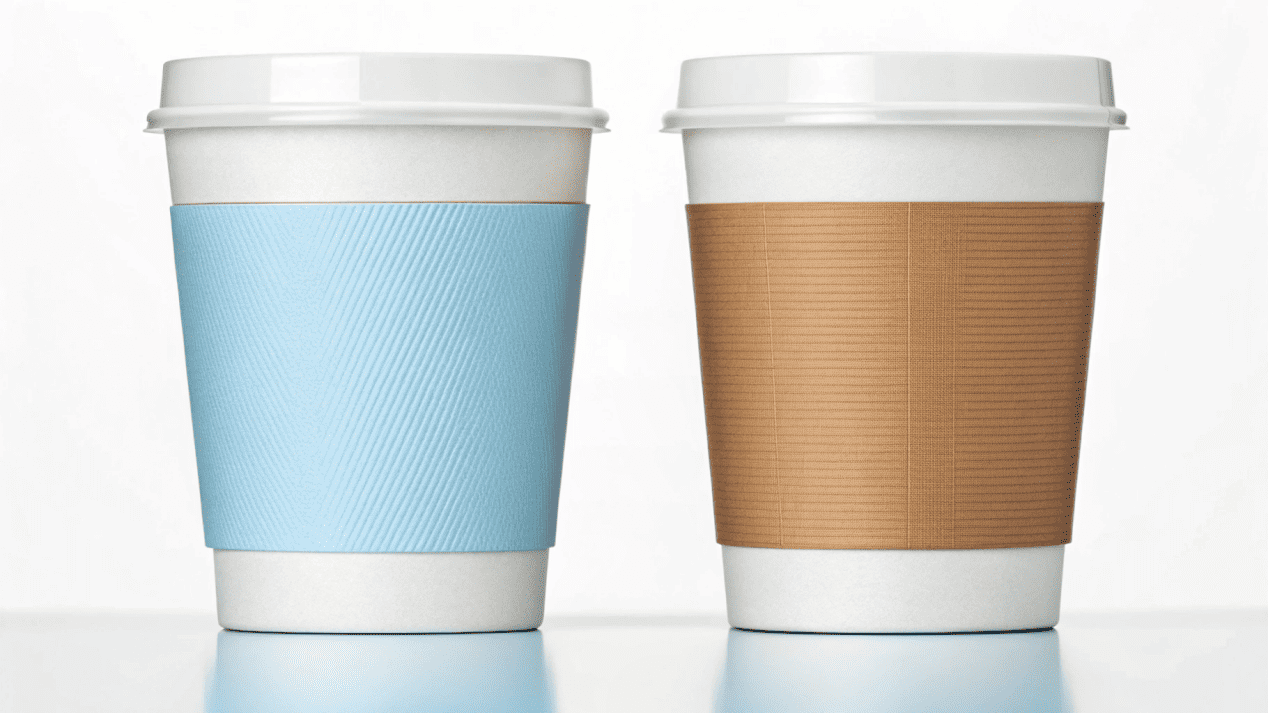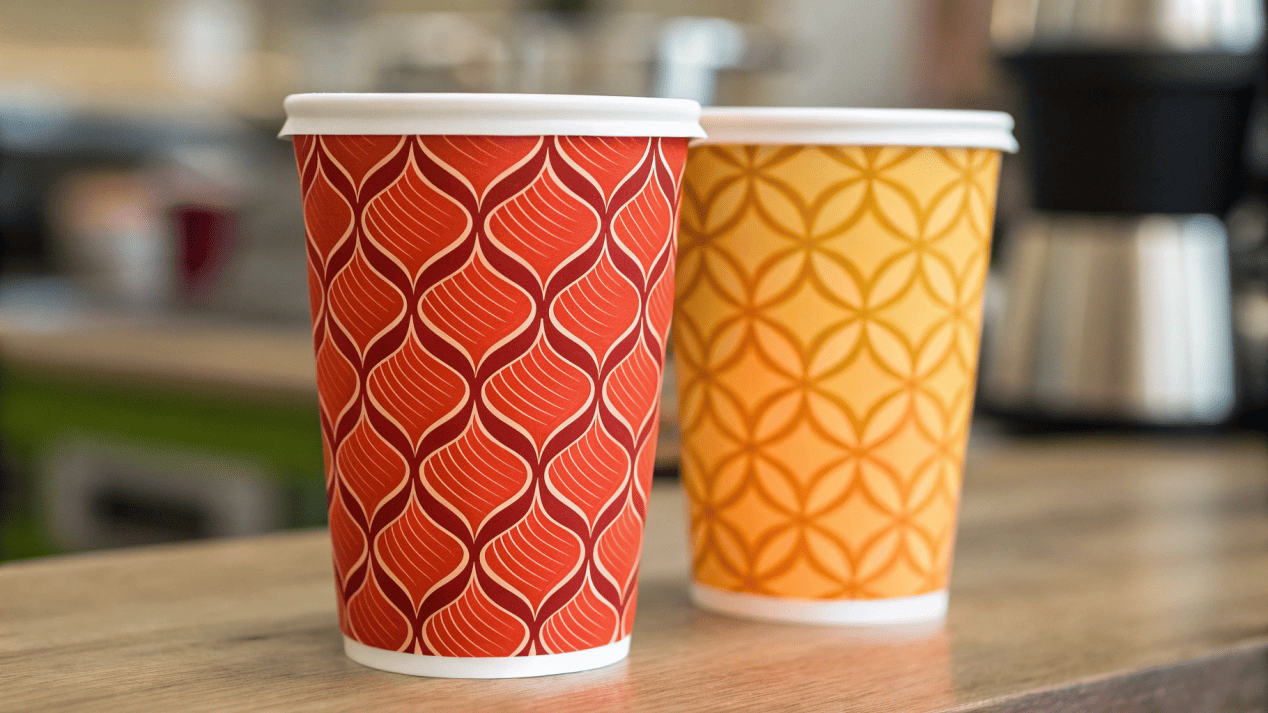You're serving hot coffee, but customers complain their hands are burning. You're forced to buy sleeves, adding cost and complexity, and your brand feels cheap.
For hot drinks, choose double wall cups. Their built-in insulation protects hands and feels premium. For cold drinks or tight budgets, choose single wall cups, but remember you will need sleeves for hot beverages.

I once consulted for a new coffee shop owner who was brilliant at making coffee but was struggling with costs. He was using single wall cups for everything to save money. But for his hot lattes, he had to buy expensive, custom-printed sleeves. When we did the math, the total cost of the cup plus the sleeve was almost the same as a double wall cup. He switched to double wall cups for all his hot drinks. His customers loved the more comfortable, premium feel, and his baristas loved the simpler workflow. It proved that the "cheapest" cup isn't always the most cost-effective solution.
What Is the Structural Difference Between Single and Double Wall Cups?
You see two cups that look almost the same, but one costs significantly more. You wonder what you are actually paying for, since the difference isn't immediately obvious.
A single wall cup is made from one layer of paperboard. A double wall cup is a cup-within-a-cup, with two layers of paper separated by an air gap for insulation.

Understanding the structure is key to understanding the price and performance. On the surface, they are both just paper cups, but the way they are built serves very different purposes. I've spent my career helping clients see beyond the surface and understand the engineering that goes into their packaging. The names "single wall" and "double wall" are simple, but the functional difference they create is huge for your customers and your business operations.
The Anatomy of the Cups
-
Single Wall Cup: Imagine a single sheet of high-quality paperboard, rolled into a cone, sealed, and with a bottom attached. To make it waterproof, we coat the inside with a very thin layer of PE plastic or plant-based PLA. It’s a simple, classic, and very efficient design. Its key feature is its simplicity: one single layer of paper.
-
Double Wall Cup: This design is more complex. We start with a standard single wall cup. Then, we wrap a second layer of paperboard around the outside, leaving a very small pocket of air between the two layers. It is literally a cup inside of another cup. That tiny air gap is the secret to its performance.
How Does the Insulation Compare Between Single and Double Wall Cups?
Your customers are juggling their hot coffee like a hot potato. You provide sleeves, but it's an extra step for your staff and an extra item for you to stock and pay for.
A double wall cup is a fantastic insulator. The trapped air keeps the drink hot while the outside stays cool to the touch. A single wall cup has very poor insulation.

This is the most important difference for any business that sells hot drinks. The customer's comfort and safety should be your top priority. I've seen customers leave a coffee shop simply because the cup was too hot to carry comfortably. The choice between single and double wall directly impacts this customer experience. One feels cheap and requires an accessory, while the other feels premium and is an all-in-one solution.
The Customer Experience with Heat
-
The Single Wall Problem: A single layer of paper transfers heat very quickly. If you pour a freshly brewed coffee into a single wall cup, the outside of the cup will become uncomfortably hot within seconds. This is why you almost always need to use a separate cardboard sleeve, or "clutch," to protect your customers' hands. It's a two-piece solution.
-
The Double Wall Solution: That small air pocket trapped between the two layers of paper acts as a powerful barrier. Air is a poor conductor of heat, so it dramatically slows down the heat transfer from the hot liquid to the outer wall. This means the coffee stays hotter for longer, and the outside of the cup remains cool and comfortable enough to hold without any sleeve. It's a safer, more convenient, and more premium experience.
Which Cup Is Better for Branding and Printing?
Your cup is a walking advertisement for your business. You want your logo to look sharp and professional, but you're not sure which cup style best reflects your brand's quality.
Both cup types offer a perfect surface for high-quality printing. The choice is about brand perception. The sturdier, integrated feel of a double wall cup communicates a more premium brand image.

Many of my clients ask me if the print quality is different on a single wall versus a double wall cup. The answer is no. With modern printing technology like ours at Haokelao, we can print beautiful, high-resolution graphics and vibrant colors on either surface. The real difference isn't the technical quality of the print; it's the message the cup as a whole sends to your customer. Packaging is silent communication. A flimsy cup says one thing, while a sturdy, comfortable cup says something else entirely.
Communicating Your Brand Image
-
Single Wall Branding: This cup offers a large, smooth canvas for your logo. It works great. A clever strategy some businesses use is to put their complex branding on a custom-printed sleeve and use a more basic, lower-cost cup. This gives you two potential branding surfaces: the cup and the sleeve.
-
Double Wall Branding: The double wall cup also has a perfect, smooth surface for printing. However, the cup itself feels more substantial and high-quality in the customer's hand. This feeling of quality is automatically transferred to the brand that is printed on it. High-end coffee chains almost exclusively use double wall cups because they understand that the cup’s feel is part of the premium coffee experience they are selling.
Which Cup Is More Cost-Effective, Single or Double Wall?
You need to manage your budget carefully. The higher per-unit price of a double wall cup is worrying, but you also know that buying separate sleeves for single wall cups adds up.
A single wall cup has a lower per-unit cost. However, for hot drinks, the "all-in" cost of a single wall cup plus a sleeve can be very close to a double wall cup.

This is the final, critical question for every business owner. As a manufacturer, I always try to give my clients a clear picture of the total cost of ownership, not just the price of one unit. The cheapest cup isn't always the one that saves you the most money in the long run, especially when you factor in extra items like sleeves and the time your staff spends handling them. Let's break down the costs in a simple table.
The "All-In" Cost Breakdown
Thinking about the total cost per serving is the smartest way to approach this.
| Attribute | Single Wall Cup | Double Wall Cup |
|---|---|---|
| Per-Unit Cost | Lower. It uses less paper and is simpler to make, so the cost for just the cup is lower. | Higher. The extra layer of paper and the more complex manufacturing process increase the cost per cup. |
| "All-In" Cost (Hot Drinks) | Cup Cost + Sleeve Cost. The total cost per serving might be very close to a double wall cup. | Cup Cost Only. It is a complete, one-piece solution, which can also simplify your inventory management. |
| Operational Simplicity | Requires you to stock and manage two separate items: cups and sleeves. Slower for staff. | Requires you to stock only one item. It is faster and easier for baristas during a busy rush. |
Conclusion
Choose double wall cups for a premium hot beverage experience. Choose single wall cups for cold drinks or if budget is the absolute top priority, but factor in the cost of sleeves.
